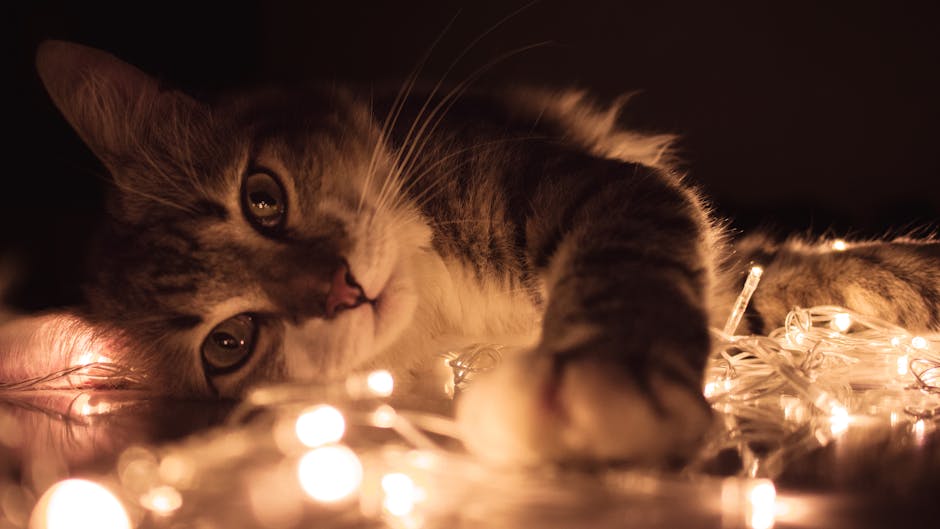In a world where we’re constantly looking for natural alternatives to common problems, keeping cats away from certain areas can be a daunting task. The use of natural cat repellents, however, offers a safe, cost-effective, and environmentally friendly solution. In this article, we’ll explore a variety of different natural cat repellent recipes that can be easily made at home to guide you on a humane and healthy journey of loving boundaries with your cats.
Importance of Natural Cat Repellents
The beauty of natural cat repellents lies in their safety and cost-effectiveness. Often, commercially available cat repellents consist of harsh chemicals which could be harmful to the well-being of your pets or family members. Natural cat repellents, on the other hand, are made from ingredients found right in your kitchen, offering a harmless solution. Additionally, they are cost-effective. Why buy expensive, potentially harmful cat repellents when you can make one at home?
There are also added environmental benefits. The production and disposal of chemical-based cat repellents contribute to pollution while natural, homemade alternatives do not. By choosing to make natural cat repellents at home, you’re doing your part in reducing chemical waste.
Key Ingredients in Natural Cat Repellents
Several common household ingredients can work wonders as natural cat repellents, owing to the fact that cats are pretty choosy when it comes to smell and taste. Key ingredients include citrus fruits, essential oils like eucalyptus, lemongrass, and peppermint, vinegar, and more. These all possess scents that are less appealing to cats, thus acting as a deterrent.
| Ingredient | Pros | Cons |
|---|---|---|
| Citrus fruits | Safe, readily available, affordable | Need frequent reapplication |
| Essential oils | Long-lasting, effective | Some can be toxic if ingested, pricier |
| Vinegar | Very cost-effective, long-lasting | Smell might be too strong for household use |
How to Make A Citrus-Based Cat Repellent at Home
Making a citrus-based cat repellent is incredibly straightforward. Begin by gathering citrus peels – oranges, lemons, grapefruit, etc. Once you have enough, boil them in a pot of water for about ten minutes. Allow the mixture to cool before straining it into a spray bottle. Now, your homemade citrus-based cat repellent is all set for use.
Checklist for making a citrus-based cat repellent:
- Citrus peels
- Medium-sized pot
- Spray bottle
- Strainer
Guide to Preparing Easy Vinegar-Based Cat Repellent
Creating a vinegar-based cat repellent is also quite simple. All you need is equal parts of water and vinegar. Mix them together and pour it into a spray bottle. Just remember, don’t use this inside your house because vinegar’s smell can be overpowering.
Pro Tip: Spray the vinegar solution around the boundary of your yard or in areas you want to keep cats away from. The smell of vinegar is a natural deterrent for cats.
Steps to Create Essential Oils Cat Repellent
Essential oils can be ideal for natural cat repellents due to their strong scents, which cats tend to dislike. Start by adding 10 drops each of lemon, eucalyptus, and citronella essential oils to water in a 16 oz spray bottle. Now, shake it well before every use to ensure the ingredients are well mixed.
Remember:
- Not all essential oils are safe for cats. Some, like tea tree oil, can be toxic. Therefore, always research before using any new oil.
- Always dilute essential oils with water as their pure form can be too harsh for both humans and pets.
Comparison of commonly used essential oils in cat repellents:
| Essential Oil | Effectiveness |
|---|---|
| Lemon | Very Effective |
| Citronella | Effective |
| Eucalyptus | Moderately Effective |
Comprehensive Guide on Making Herbal-Based Cat Repellents
Several herbs including lavender, rosemary, and rue can be used to deter cats. You can start by boiling water and adding fresh or dried herbs to it. Let it steep until the water cools, and strain the mixture into a spray bottle. This herbal solution can be sprayed around your home to keep cats at bay.
Best Practices:
- Always wash the herbs thoroughly to remove any chemicals or contaminants present.
- Regularly replenish the homemade herbal cat repellent as its potency decreases over time.
How to Make a Safe Indoor Cat Repellent Spray
For a safe indoor cat repellent, mix two parts water with one part vinegar or apple cider vinegar and ten drops of an essential oil like lavender or eucalyptus. This would repel cats without overpowering you with a strong smell.
Pro Tip: Always test a small area first to ensure the spray does not stain or discolor your furniture or carpets.
Outdoor Cat Repellent Solutions You Can Try
An effective outdoor cat repellent can be made with citrus peels and vinegar. Boil the peels in vinegar and let it cool. Once cool, pour it into a spray bottle and apply it around your backyard or garden.
Recommended ingredients for outdoor cat repellent solutions:
- Vinegar
- Citrus peels
- Water
Recipes of Cat Repellent Using Coffee Grounds or Spices
Mixing coffee grounds or certain spices like cayenne pepper, cinnamon, and mustard powder with water can result in a safe and potent natural cat repellent. Just remember to use it sparingly and avoid applying it directly on plants as it may be harmful.
New Recipes: Cat Repellent Using Essential Oils and Water
A simple yet effective cat repellent can be made by mixing a cup of water with half a cup of witch hazel and ten drops each of eucalyptus, citrus, and lavender essential oils.
Pros and Cons:
- Pros: Easy to make, extremely effective, safe for indoor use
- Cons: Requires frequent reapplication, some oils may be expensive
Less-Known Cat Repellents: Using Cider Vinegar or Black Pepper
Mix a cup of cider vinegar with a quarter cup of black pepper for an efficient, albeit pungent, cat repellent. Be careful not to spray it near your nose or eyes, as black pepper can be quite irritating.
Safety tips: Use gloves and protective eyewear when handling black pepper in large quantities.
Additional Recipes: Cat Repellent with Mustard and Flour
Mixing mustard and flour in equal proportions and sprinkling it around the areas where the cats often visit can deter them effectively. Remember to replace the mix every couple of days for sustained effectiveness.
Concocting Cat Repellent with Garlic, Pepper, and Lemon
Combine two parts crushed garlic, one part crushed pepper, and one part lemon juice. Strain this mixture and add it to water in a spray bottle. This strong-smelling concoction will certainly keep the cats away.
Best Practices: Avoid spraying this mixture on plants as it can be harmful to them.
Guide for Creating a Safe Cat Repellent with Rosemary and Vinegar
Steep fresh rosemary in vinegar for a couple of days. Strain the mixture and add an equal amount of water. Spray this mixture around your house or backyard for an effective and safe cat repellent.
Comparison with other repellents
Key Takeaway:
- Using natural cat repellents is much safer for both pets and humans, cost-effective and has a minimal environmental impact compared to commercial products.
- Common ingredients used in homemade cat repellents include citrus fruits, essential oils like eucalyptus, lemongrass, and peppermint, and vinegar, all of which naturally deter cats due to their unique scents.
- Making these cat repellents at home is straightforward and easy, whether you’re utilizing methods involving citrus fruits, vinegar, essential oils or a host of other ingredients.
- These repellents can be tailored for indoor or outdoor use, depending on the need.
Ensuring our pets or stray cats aren’t invading specific areas doesn’t have to come at a cost to their well-being. Natural cat repellents offer a simple, cost-effective and safe solution for everyone and the environment. Keeping all members of our ‘home ecosystem’ going healthily and happily is entirely feasible. Happy experimenting!
FAQs
Q: Can these homemade cat repellents harm my cat?
A: These homemade repellents are designed to be a deterrent, not harmful. They use natural ingredients that most cats dislike, so they’re unlikely to harm your cat. However, if your cat has specific allergies, consult a vet beforehand.
Q: What’s the shelf life of these homemade cat repellents?
A: It can vary depending on the ingredients used and how it is stored. Generally, homemade cat repellents last for a couple of weeks if stored in a cool, dark place.
Q: Can I use these repellents on my furniture to prevent scratching?
A: While these repellents can indeed deter cats, you should be cautious about using them on furniture. Certain solutions, particularly those with citrus effects, may discolour or damage some materials. Always test a small area first.
Q: Why does my cat dislike these particular scents?
A: Cats have a strong sense of smell and certain scents such as citrus, vinegar, and some essential oils can be overpowering and unpleasant for them, making them excellent natural deterrents.
Q: Can I use these repellents on plants to keep cats away?
A: Yes, you can if the plant isn’t sensitive to the ingredients. But be careful; some ingredients might be harmful to specific plants. If unsure, consult an expert or conduct a small patch test first.
We hope you found this guide informative and useful. Feel free to share this article with friends, family, or anyone who might benefit from this information! If you’re interested in more posts like this, be sure to check our website regularly.






